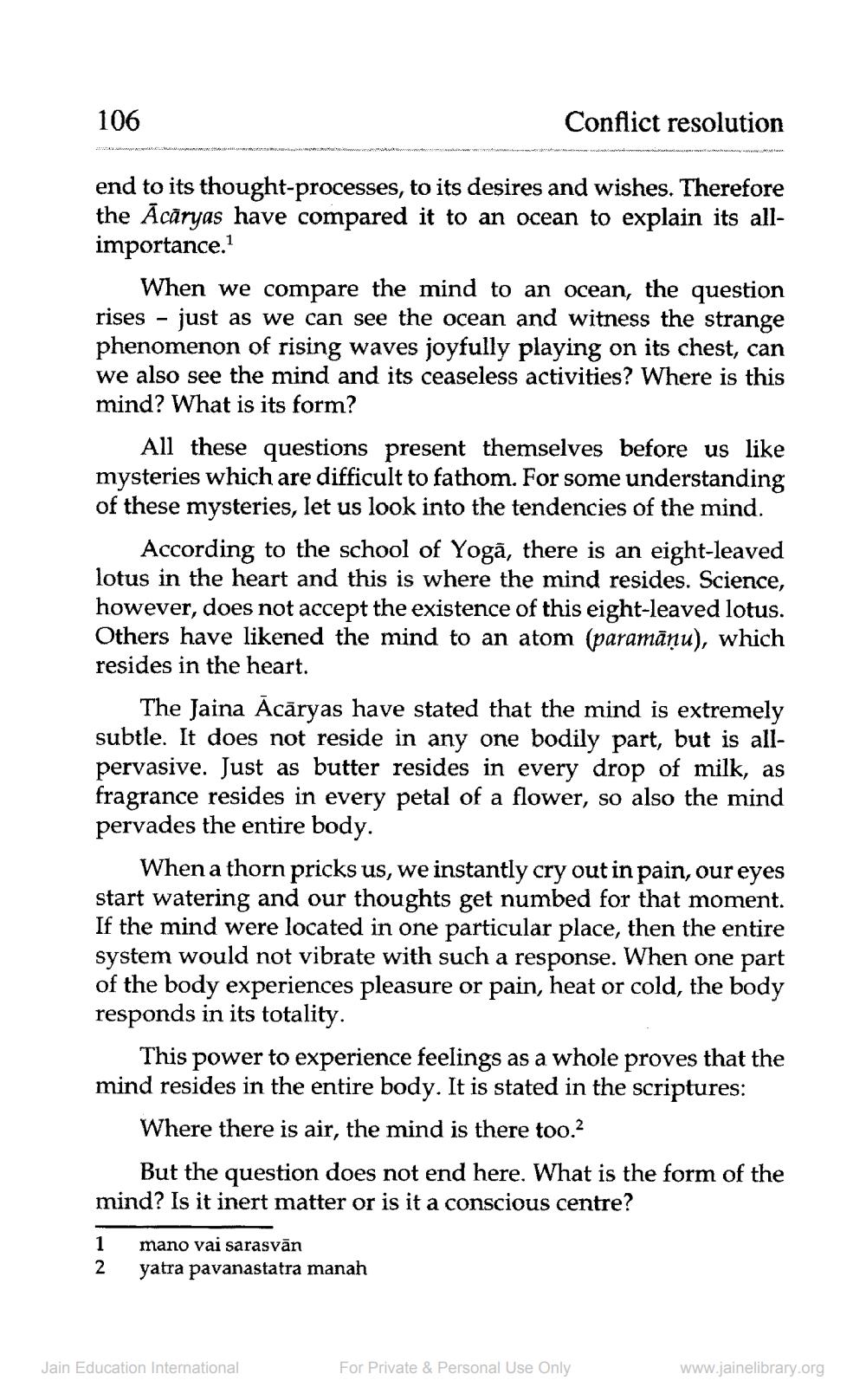________________
106
Conflict resolution
end to its thought-processes, to its desires and wishes. Therefore the Ācāryas have compared it to an ocean to explain its allimportance.
When we compare the mind to an ocean, the question rises - just as we can see the ocean and witness the strange phenomenon of rising waves joyfully playing on its chest, can we also see the mind and its ceaseless activities? Where is this mind? What is its form?
All these questions present themselves before us like mysteries which are difficult to fathom. For some understanding of these mysteries, let us look into the tendencies of the mind.
According to the school of Yogā, there is an eight-leaved lotus in the heart and this is where the mind resides. Science, however, does not accept the existence of this eight-leaved lotus. Others have likened the mind to an atom (paramāņu), which resides in the heart.
The Jaina Ācāryas have stated that the mind is extremely subtle. It does not reside in any one bodily part, but is allpervasive. Just as butter resides in every drop of milk, as fragrance resides in every petal of a flower, so also the mind pervades the entire body.
When a thorn pricks us, we instantly cry out in pain, our eyes start watering and our thoughts get numbed for that moment. If the mind were located in one particular place, then the entire system would not vibrate with such a response. When one part of the body experiences pleasure or pain, heat or cold, the body responds in its totality.
This power to experience feelings as a whole proves that the mind resides in the entire body. It is stated in the scriptures:
Where there is air, the mind is there too.2
But the question does not end here. What is the form of the mind? Is it inert matter or is it a conscious centre?
2
mano vai sarasvān yatra pavanastatra manah
Jain Education International
For Private & Personal Use Only
www.jainelibrary.org




